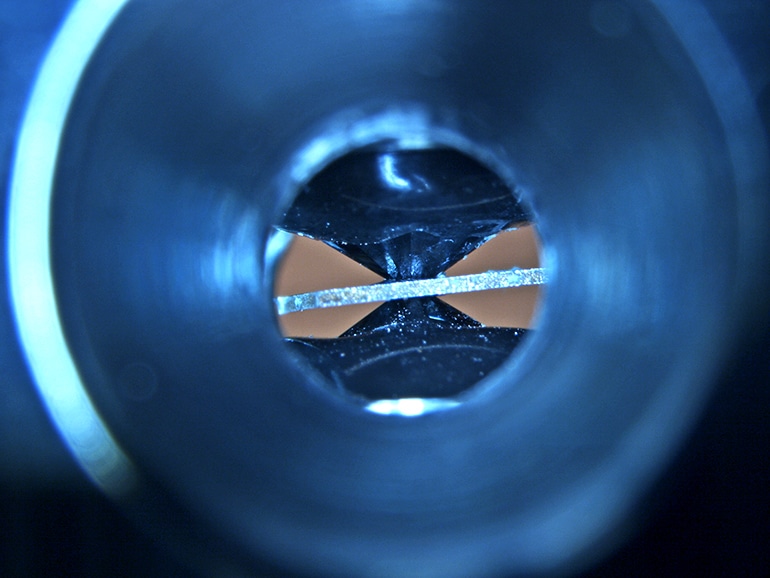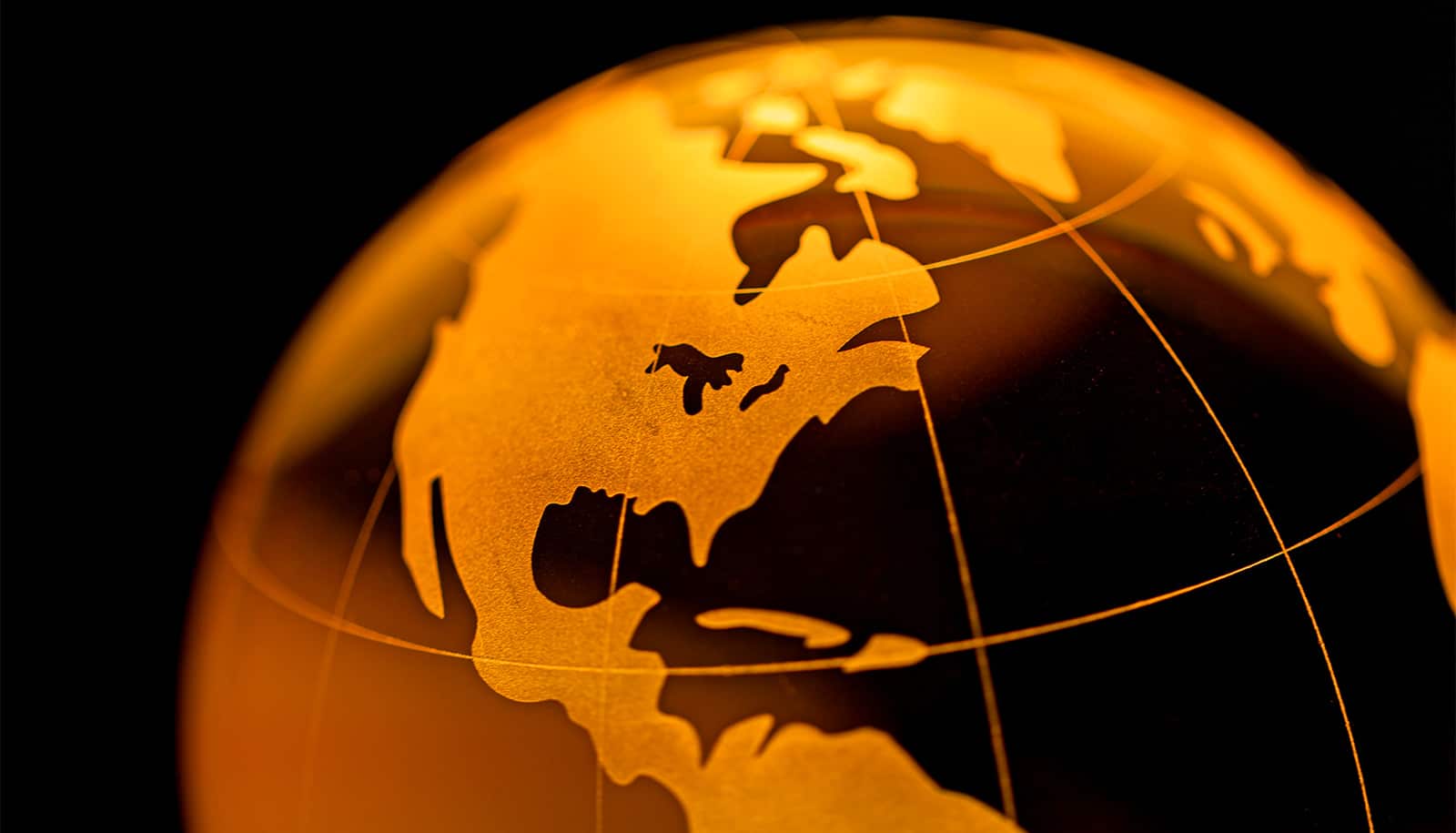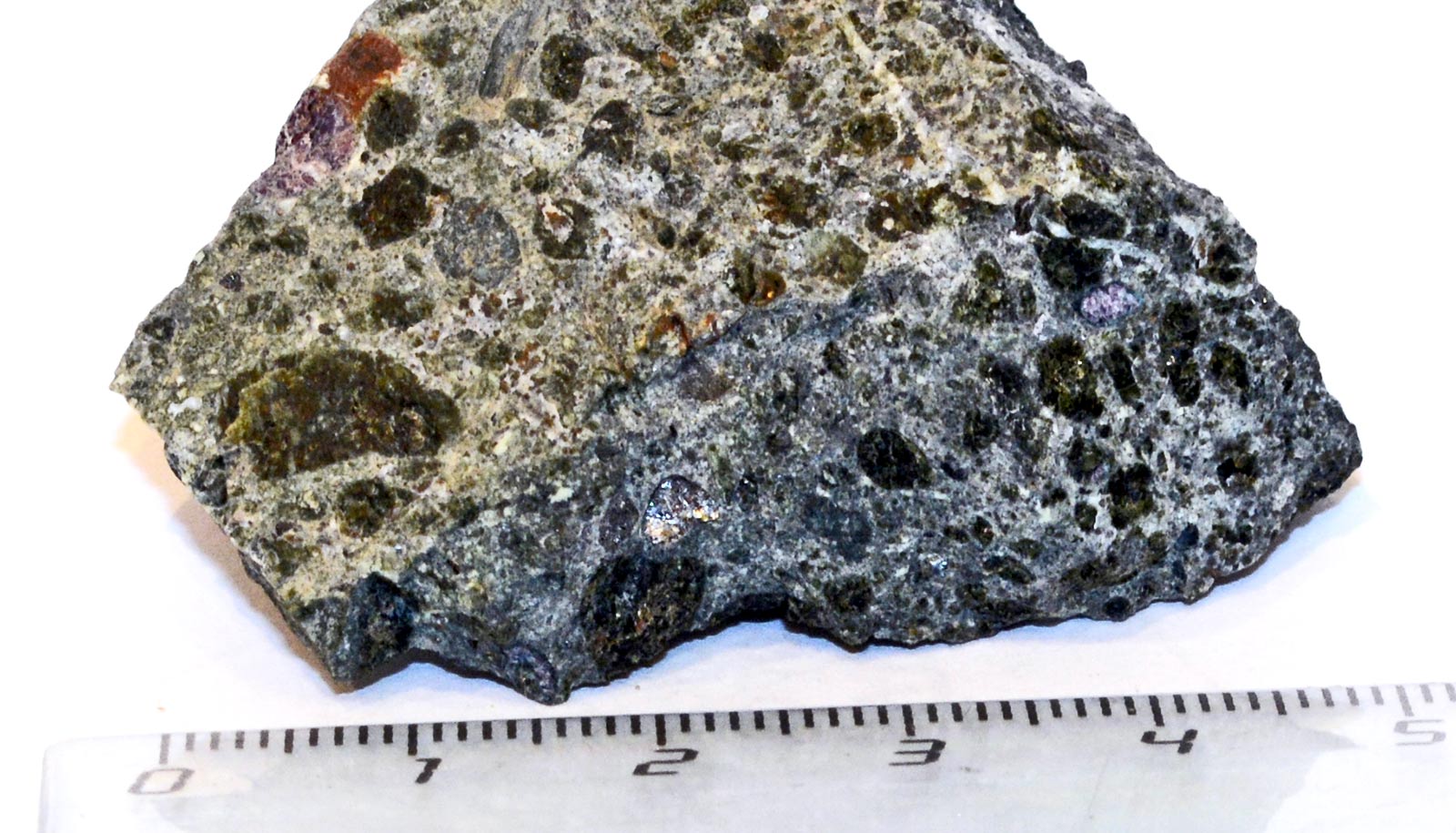New research gives scientists a clearer picture of the Earth’s mantle.
Scientists think that the mantle is like marble cake, mixed up by swirling together bits of ocean floor and primordial rock.
The biggest challenge of studying the planet’s middle, biggest layer—sandwiched between its iron core and thin surface that is host to living creatures—is that it can’t been seen. Think of it as a patient getting a CAT scan, and the doctor being able to see dark and light spots indicative of healthy tissue and tumors.
Instead of a CAT scan, however, geologists use seismographs. Since they can’t dive down to explore what the “spots” actually mean, they have to decipher what the difference in wave frequencies are telling them.
“We’re looking at a picture of the mantle but we don’t know what the colors mean,” says Susannah Dorfman, a geoscientist at Michigan State University and the study’s co-lead author. “The seismic wave patterns show contrast that indicates different squishiness and different densities; our job is to figure out what’s down there and why.”
A rare and ubiquitous mineral
Scientists think that the mantle is like marble cake, mixed up by swirling together bits of ocean floor and primordial rock. Like the chocolate and vanilla cake, different parts of the mantle have different compositions.
Dorfman likens her lab and the analysis her team conducts to chefs in a test kitchen. The main ingredient on this menu, though, is bridgmanite—Earth’s most-abundant mineral.
Researchers estimate that bridgmanite makes up more than 50 percent of the Earth. While ubiquitous in the mantle, it’s quite rare on the surface.
How rare? Researchers have theorized its existence and manufactured it in labs since the ’70s. But it wasn’t until 2014 that a speck of natural bridgmanite was found in a meteorite, its crystal structure mapped and officially christened.
Cooking up some minerals
In the kitchen lab, the team cooked up a sample of the rare mineral. Using a diamond anvil pressure cell and laser heating—to duplicate the mantle’s unimaginable pressure and heat—they tested their recipe of bridgmanite with a pinch of ferric iron. This combination is quite dense and oxidized. (Ferric iron can be found in rust.)
“The minimum pressure you need to make bridgmanite in the mantle—a quarter million atmospheres—is like all the weight of an elephant balanced on a poppy seed,” Dorfman says.

The team also changed bridgmanite’s composition, swapping out magnesium and silicon atoms for iron 3+ atoms.
“It changed the structure and how it acts,” Dorfman says. “There’s a change in the iron atom called a spin transition, where the atom shrinks and becomes denser because of the intense pressure. This potentially duplicates what’s going on deep in the mantle.”
These lab-cooked recipes provide a model and some insights into the minerals that potentially comprise the mantle. What Dorfman’s team cooked isn’t an exact copycat of the mantle minerals, but the end result produced the clearest measurements of the density, compressibility, and electronic conductivity of rusty bridgmanite in the lower mantle.
‘A weird place’
While Dorfman and other scientists may never see mantle core samples firsthand, the observations and measurements from the lab will help scientists interpret what seismic waves may be telling them.
The findings will help scientists use geophysical measurements to accurately map the amount of iron in the mantle, but the team also determined that it will be difficult to see how oxidized it is. Dorfman remains optimistic that this line of research will unveil some of the mantle’s mysteries.
Did Earth’s mantle swallow half of India and Eurasia?
“The deep mantle is a weird place with mysterious features that may be residues of Earth’s formation, graveyards for piles of sunken tectonic plates, sources for hotspot volcanoes like Hawaii, or the processes that shaped the atmosphere,” Dorfman says. “Anything we can detect about the composition of features at the base of the mantle may help us solve these mysteries.”
The research appears in the journal Nature Communications.
Scientists from the University of Michigan, the Center for High Pressure Science and Technology Research (China), the University of Hawaii, Argonne National Laboratory, the University of Texas at Austin, and the University of Illinois contributed to the research.
Source: Michigan State University



